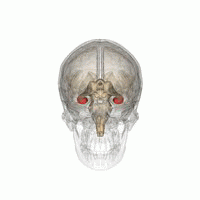

The Nobel Prizes were announced this week, and the people and findings that are given the most significant award in science can tell us a lot about where science is, and what pressing questions researchers are answering.
For one thing, it tells us where the academy thinks we’ve achieved the most. This year’s nobel prize for physiology or medicine went to John O’Keefe and the Mosers – May-Britt and Edvard, “for their discoveries of cells that constitute a positioning system in the brain”.
O’Keefe used neurophysiological methods to show that certain hippocampus nerve cells were activated when mice were in a particular spot, and that these built an inner map of the environment. The Mosers then found the rest of the circuit in the form of ‘grid cells’ in the entorhinal cortex, and cells that sense the position of the head.
There have been lots of prizes for neuroscience, and you can see the development of the field from the history of the prize. The prize has recognized plenty of advances in understanding the general principles of how neurons and sensory systems work, but there have only been a handful of prizes for mapping parts of the brain.

We’ve written before about the huge amount of money that is going into the challenge of mapping exactly which bit of the brain controls what. The roots of it in are in the 1949 Nobel for mapping the organization of the different organs in the interbrain, and in 1981, for mapping the cerebral hemispheres and visual system.
This year’s prize, however, moves beyond mapping bits of the brain to the body part it controls, to understanding what parts of the brain control higher processes like memory and conscious thought.
It’s not just about individuals
John O’Keefe, in an interview with nobelprize.org said on how futile scientists used to think this kind of work was:
“At the beginning most people were quite skeptical at the idea that you could go deep inside the brain and find things which corresponded to aspects of the environment…I think it’s taken a while, but there were some people early on who accepted it and of course I’m grateful and of course now the field has blossomed. And I think the Prize actually is as much for the field as for myself and the Mosers.”
And the Mosers echoed this idea of the finding being thanks to the effort of a network of people, both in the lab, the academic environment and in the groups that fund them.
May-Britt Moser said “this is an honor for all the people who have supported excellent science in Norway”, and Edvard Moser added “it is a teamwork, and it is a lot of people who are completely invisible, like all the people at the university, NTNU and people in the research council, for sort of giving us absolutely top conditions for 20 years”.
This may just be modesty – if you win a Oscar or BAFTA, you have to thank the director, fridge repair man, etc. But it also brings up the question of how you can identify individuals to reward in a field like science, where great achievements come from incremental advances and collaborations.
But then, what is the alternative? Science is made up of individuals, and clearly some will achieve more than others, so how should we award excellence if not by awarding those individuals?
The subject boundaries are blurring
Beyond the physiology and medicine prize, a lot of commentators also highlighted that the categories for the scientific fields didn’t reflect that some important findings don’t fit neatly into the category of one science or the other.
The Chemistry prize, for instance, was “for the development of super-resolved fluorescence microscopy”, a method that has been vital in understanding the structure of cells. The chair of the Nobel Committee for Chemistry, Sven Lidin saidduring the announcement, ‘Biology has turned to chemistry. Chemistry has turned into biology.’ Or as Adam Rutherford summarised, the Chemistry Nobel “goes to physics for biology. NICE.”
Does dividing science up into categories, and giving awards for significant achievements to a handful of individuals reflect the way science is done? No, it probably doesn’t. But then, no award is going to definitively decide who is doing the most significant work in a field as diverse and dynamic as science, where today’s top theory can be tomorrow’s phlogiston.
And of course there is a need for some division between the subjects – an award is more meaningful if it’s given by peers in a field, and while science gets more specialist, it’s not feasible to keep subdividing the categories until the award loses its significance.
The biggest awards in science give all scientists an amazing goal to work towards, and so congratulations to all of this year’s winners for their achievements.
Comments